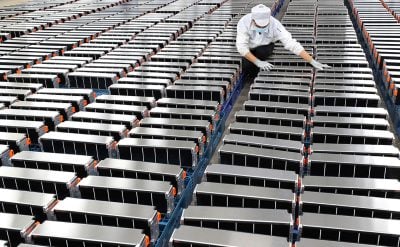South Africa’s centuries-old dairy industry is turning increasingly sour as producers, corporates and retailers seem to be at daggers drawn over who should get how much from the product. Report by Tom Nevin.
In the last decade or so, South Africa’s community of dairy farmers has dwindled from around 7,000 to the 3,000 still in business today. Many more face an uncertain future. The problem is the sharply divided nature of South Africa’s milk-based industry with the antagonists being the primary producers on the dairy farms and the corporate sector that buys the milk and turns the bulk of it into a variety of powdered, condensed and long-life UHT products, and supplies the retailers and the cheese, yoghurt and cream makers. These sectoral components are at daggers drawn and such are the attitudes to one another it seems unlikely that peace will prevail any time soon.
The conflict centres on what happens to the R10bn ($1bn) revenue generated each year. In its simplest form, the problem involves the dairy farmers versus the rest, namely big time processors like Parmalat and Nestlé, and the retailers from the corner café to the hypermarket. The farmers are enraged that the processors should decide how much they will pay for the milk they collect from the dairies while the retailers set the consumer price.
Each player in this uneasy triangle has a part to play, each considers its role vital and everyone wants to be paid fairly for their contribution. The problem: who gets how much? Tempers are frayed and harsh words are exchanged. Attitudes are as hard, however, and solutions will not easily be found.
Retailers seem ambivalent to the rumbles in the meadows as long as they can meet consumer demand and stock their shelves with fresh milk each day. Many in the farming community say they are caught in a price vice wielded by the corporate players that makes dairy farming unsustainable, a contention given credibility by the fact that dairy farms are falling like ninepins.
Dairy’s corporate sector bristles at the notion that processors, which treat about 85% of the fresh milk South Africa produces into powder and other dairy products, are responsible for the diminishing number of primary producers and are squeezing out the remaining few.
They contend the farmers only have themselves to blame for ignoring market signals on price and other indications of the changing dairy business landscape. On the other hand, Steve Roberts, the representative of a group of Underberg dairy farmers in KwaZulu-Natal, says that revenues taken by processors and retailers have shown a steady increase over the years since formal record keeping began in 2007 while farmers’ share actually decreased from 2007 to 2011 “with far from adequate corrections from 2010”.
He also charges that corporate behaviour by processors brings “absolutely no advantage to the consumer because it can be proved that all these companies increase prices steadily while the farmer has received less than half. The difference between the two price increases amounts to about R9.8bn ($981m) sucked out of farms and into corporate coffers since 2007. Farmers need to wake up and break this corporate stranglehold”.
Roberts maintains: “This is leading to the destruction of the South African dairy farming industry, changing the rural landscape and destroying livelihoods and many, many jobs.”
He adds that “this collusional dominance is used to bully farmers to accept prices and systems that are unjust and unsustainable and will in the end lead to far higher prices for milk as the industry crumbles”.
Dairy money trail
A glance at the money trail in graphic form leaves little doubt that the dairy farmers have something to grumble about. In the last 10 years the farmers’ cut has progressed from just over R2.00 ($0.20) a litre in 2003 to about $0.36 today. Processors’ slice has jumped from $0.34 to $0.61 while retailers’ share has rocketed from $0.48 to $1.
How fair is that, dairy farmers want to know, pointing out that the blood, sweat and tears they must endure as the primary producer are at least double that of the other players and yet they find themselves on the revenue sharing the hind teat .
On the face of it, all players in the milk industry are true to their nature. The dairy farmers want to stay comfortably and financially secure on their farms and need a workable milk price to do it. For most, their farm is their pension plan. When they retire they’d like to sell it for a reasonable sum, buy a home on the coast with the proceeds and relax in the twilight years.
These days, however, many complain that they can’t make their dairy business sustainably profitable because of low prices from retailers and processors. So they’re forced out, must sell their farms to pay off debts and have precious little left for retirement.
For the processor bulk buyers, milk is their business and the goal of the corporation man is to run a successful operation, maximise profits and keep the shareholders happy. If the dairy farmer gets hurt in that process, that’s a fact of business life and if the farmers can’t take the heat they should stay out of the kitchen.
For the retailer, the milk sales side of his enterprise is to be opportunistic and interventional. Probably more than other product in his store, fresh milk is a loss leader and draw card, with the price manipulated virtually daily to attract customers and stimulate sales. Accordingly, it’s natural for retailers to pay as little as possible to buy it and get as much as they can get in selling it because in all probability they’ll have to trade it down.
Each player in the industry has his reasons for his attitude to the price he pays or is paid for the milk he buys, and it’s the farmer who protests most vociferously at his cut, because his part in the chain, he insists, is the most onerous and tenuous.
It’s probably not accurate or very fair to suggest that the dairy farmers’ difficulties have been exacerbated by the attitude of milk’s corporate sector, but it does seem a development that they’re not exactly discouraging.
Are South Africa’s dairy farmers resistant to change? Are they content to make a comfortable income and live in the moment, rather than approach their profession as a business to be long-term planned and sustained? Are they ignoring both the industry’s signals and its alarm bells? Will an increase of even a rand or two a litre really make that much difference in the longer term when inflation and other input factors catch up with the price hikes?
If today’s dairy farmers want to stay in the business and prosper, they’ll have to heed the writing on the milking parlour wall that is urging them to take the next step and think beneficiation and added value either alone, with fellow farmers or in partnership with the established corporates.
If the dairy farming community want to take on the processing corporations, they’ll have to rearm with reconstructed operations that will transform their farms into business forces to be reckoned with.
Want to continue reading? Subscribe today.
You've read all your free articles for this month! Subscribe now to enjoy full access to our content.
Digital Monthly
£8.00 / month
Receive full unlimited access to our articles, opinions, podcasts and more.
Digital Yearly
£70.00 / year
Our best value offer - save £26 and gain access to all of our digital content for an entire year!
 Sign in with Google
Sign in with Google 


